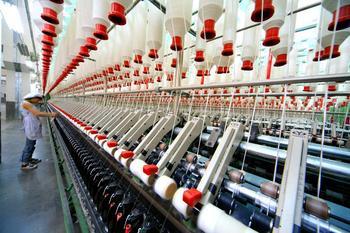 The Japanese textile and apparel industry entered an upgrade period in the 1980s. After the Second World War, Japan's textile and garment industry experienced a growth period marked by the rapid growth of domestic OEM production; after entering the mature period in the 1960s, domestic trade competitiveness presented an inverted U curve process that increased first and then decreased; in the 1980s, it was accompanied by costs. The advantages gradually lost. The Japanese textile and apparel industry ushered in an upgrade. The upstream manufacturing has broken through with high value-added products, while the apparel industry has turned to the development of the fashion industry. It has changed from a single industry to manufacturing, distribution, advertising, apparel, sports, leisure and other life-related links. Industrial ecosystem.
The Japanese textile and apparel industry entered an upgrade period in the 1980s. After the Second World War, Japan's textile and garment industry experienced a growth period marked by the rapid growth of domestic OEM production; after entering the mature period in the 1960s, domestic trade competitiveness presented an inverted U curve process that increased first and then decreased; in the 1980s, it was accompanied by costs. The advantages gradually lost. The Japanese textile and apparel industry ushered in an upgrade. The upstream manufacturing has broken through with high value-added products, while the apparel industry has turned to the development of the fashion industry. It has changed from a single industry to manufacturing, distribution, advertising, apparel, sports, leisure and other life-related links. Industrial ecosystem. Japan's upstream textile manufacturing industry upgrade is divided into three steps:
1) Relocation of low-end production capacity: Transfer of upstream basic industries to emerging cost-dominated areas, forming the second industrial transfer of global textile and apparel;
2) Eliminating outdated production capacity: The Japanese government has jointly issued a stringent prevention policy represented by the equipment registration system and a supporting policy represented by the acquisition of end-of-life equipment to guide the textile industry to eliminate backward production capacity;
3) High value-added product creation: Under the government support and guidance policy, Japan's domestic textile industry adopts machinery automation technology applications and cooperates with other industries to conduct cutting-edge technology research and development to increase the added value of products.
Japan's downstream brand apparel industry upgrades through two paths:
1) Japan seized the opportunity of the international fashion industry in the 1970s and 1980s to urgently need foreign cultures. With the help of Japanese designers in the international community, the government launched Tokyo Fashion Week in a timely manner and successfully established itself as a fashion capital.
2) Local mass brands achieve product diversity and price affinity through continuous promotion of supply chain refinement to increase market response efficiency and reduce circulation costs, and finally established the deep integration model of SPA in Japan's Volkswagen brand In the popularization.
The Reference of China's Textile and Apparel Industry Upgrading to China:
Upstream manufacturing, due to the absence of “government-driven†factors in China during the upgrade process in Japan, it is difficult for China to replicate the upgrade ideas for advanced technology research and development in Japan. In the future, the path may be to attract international resources after the low-end production capacity is shifted outwards and based on its own scaled-up mature process foundation. The medium and high-end capacity demand, and currently have mature mid-to-high-end production capacity and scale advantages of the company will benefit in this process.
Downstream branded apparel, Japan's two supply routes in the upgrade path are more in line with China's consumption status, and will be the main direction for local branded apparel companies to improve in the future. They will take into consideration the direct match ratio and industry ranking indicators, and select a reasonable channel layout. Leading strength, it is expected to make a breakthrough in the fine competition in the future.
Men Polo-Shirt,Yellow Polo Shirt Mens,Green Striped Polo Shirt,Dark Purple Polo Shirts
Yingjia Garment Co., Ltd , https://www.yjgarments.com